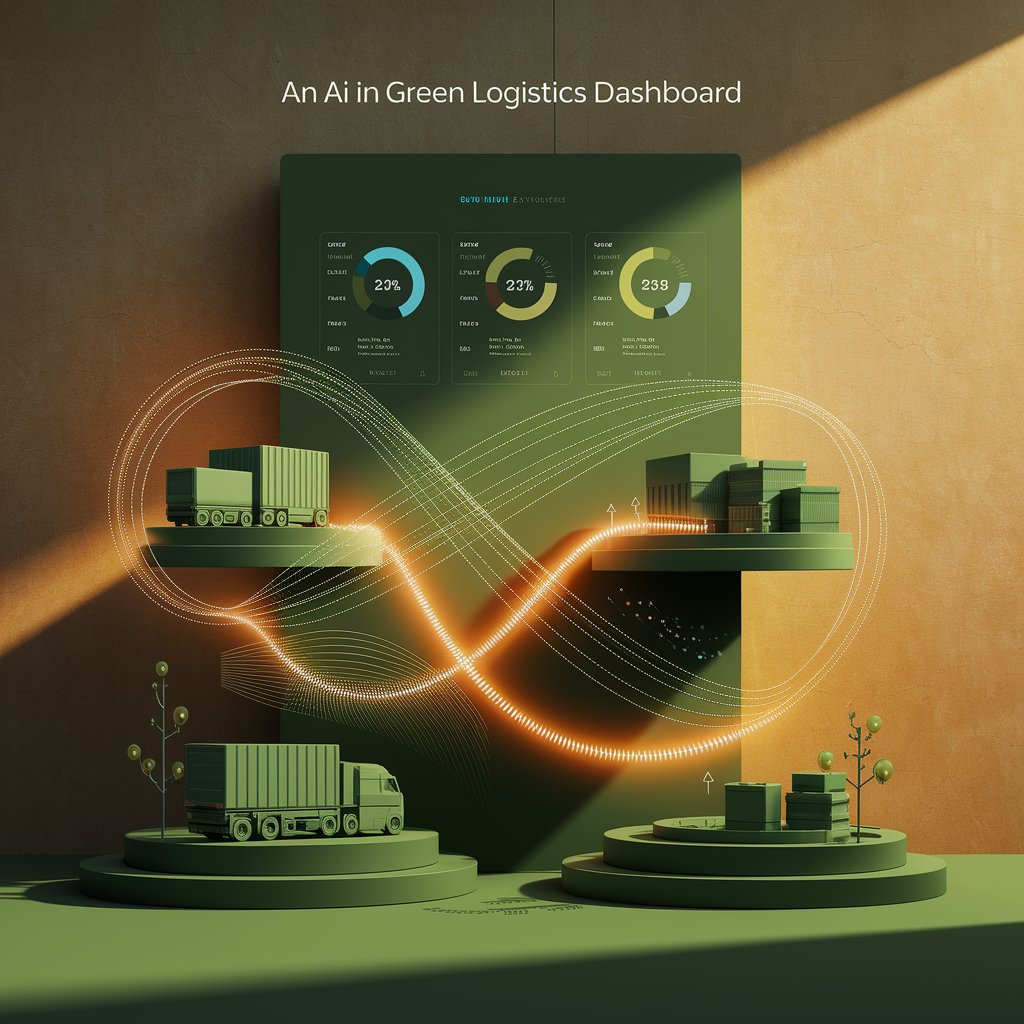AI in Green Logistics: Driving Sustainable Supply Chains

Introduction
That’s where AI in green logistics plays a critical role. By combining artificial intelligence with data from IoT sensors, transport systems, and external sources, AI helps companies build cleaner, more efficient, and more resilient logistics networks.
What Is AI in Green Logistics?
AI in green logistics refers to the use of artificial intelligence to optimize logistics operations with a focus on sustainability. It integrates environmental KPIs such as CO₂ emissions, fuel efficiency, and resource consumption into decision-making processes, ensuring supply chains are not only efficient but also environmentally responsible.
Instead of balancing speed and cost alone, AI-driven systems add a third dimension: sustainability.

Key Features of AI in Green Logistics
- Carbon Emission Tracking – Real-time monitoring of CO₂ output across fleets.
- Route Optimization – AI finds fuel-efficient, low-emission transport paths.
- Smart Load Planning – Reduce empty miles by maximizing cargo utilization.
- Predictive Maintenance – Extend asset life and reduce waste through AI scheduling.
- Sustainability Dashboards – Centralized KPIs for emissions, fuel, and efficiency.
- Green Supplier Selection – AI evaluates partners based on ESG performance.
Benefits of AI in Green Logistics 🌱
- Lower Carbon Footprint – Reduce emissions with smarter transport planning.
- Cost Savings – Fuel efficiency and optimized assets lead to financial savings.
- Regulatory Compliance – Stay ahead of ESG and government requirements.
- Stronger Brand Reputation – Meet consumer demand for greener practices.
- Resilient Supply Chains – Efficient and sustainable systems handle disruptions better.
- Innovation Edge – Position as a leader in sustainable logistics innovation.

Real-World Applications
- Freight Forwarders – Optimize multi-leg shipments to minimize environmental impact.
- Carriers – Track and improve fleet emissions performance.
- E-commerce Logistics – Adopt greener delivery routes for last-mile logistics.
- Cold Chain Providers – Balance sustainability with strict cargo requirements.
- Global Shippers – Evaluate suppliers based on sustainability and efficiency KPIs.
Challenges in AI in Green Logistics
- Data Availability – Lack of standardized sustainability data across partners.
- High Initial Investment – Green AI systems require upfront costs.
- Integration Issues – Legacy systems may not track emissions data effectively.
- Regulatory Complexity – Different regions impose varying sustainability standards.
- Change Resistance – Shifting company culture toward ESG-first logistics.

Best Practices for Success
- Set Clear ESG Goals – Define emissions targets aligned with business strategy.
- Unify Data Sources – Integrate fleet, warehouse, and partner sustainability data.
- Leverage Predictive Analytics – Anticipate inefficiencies before they occur.
- Promote Collaboration – Work with carriers and suppliers on shared green goals.
- Invest in Renewable Tech – Combine AI with EVs, solar-powered warehouses, etc.
- Track ROI in Dual Metrics – Measure both cost savings and CO₂ reductions.
The Future of AI in Green Logistics 🚀
- Autonomous Green Vehicles – AI-powered EV fleets with real-time eco-routing.
- Digital Twin Sustainability Models – Simulate logistics networks for greener outcomes.
- Blockchain for Carbon Reporting – Transparent and tamper-proof ESG data sharing.
- AI-Powered Circular Logistics – Optimize reverse logistics and recycling flows.
- Global Green Standards Compliance – AI adapting operations to shifting ESG policies.
Conclusion
AI in green logistics is no longer optional—it’s essential. By combining predictive analytics, real-time monitoring, and sustainability-focused decision-making, AI empowers companies to reduce emissions, cut costs, and build environmentally responsible supply chains.
For logistics providers, freight forwarders, and global shippers, adopting AI in green logistics is the path to competitive advantage and long-term sustainability.
